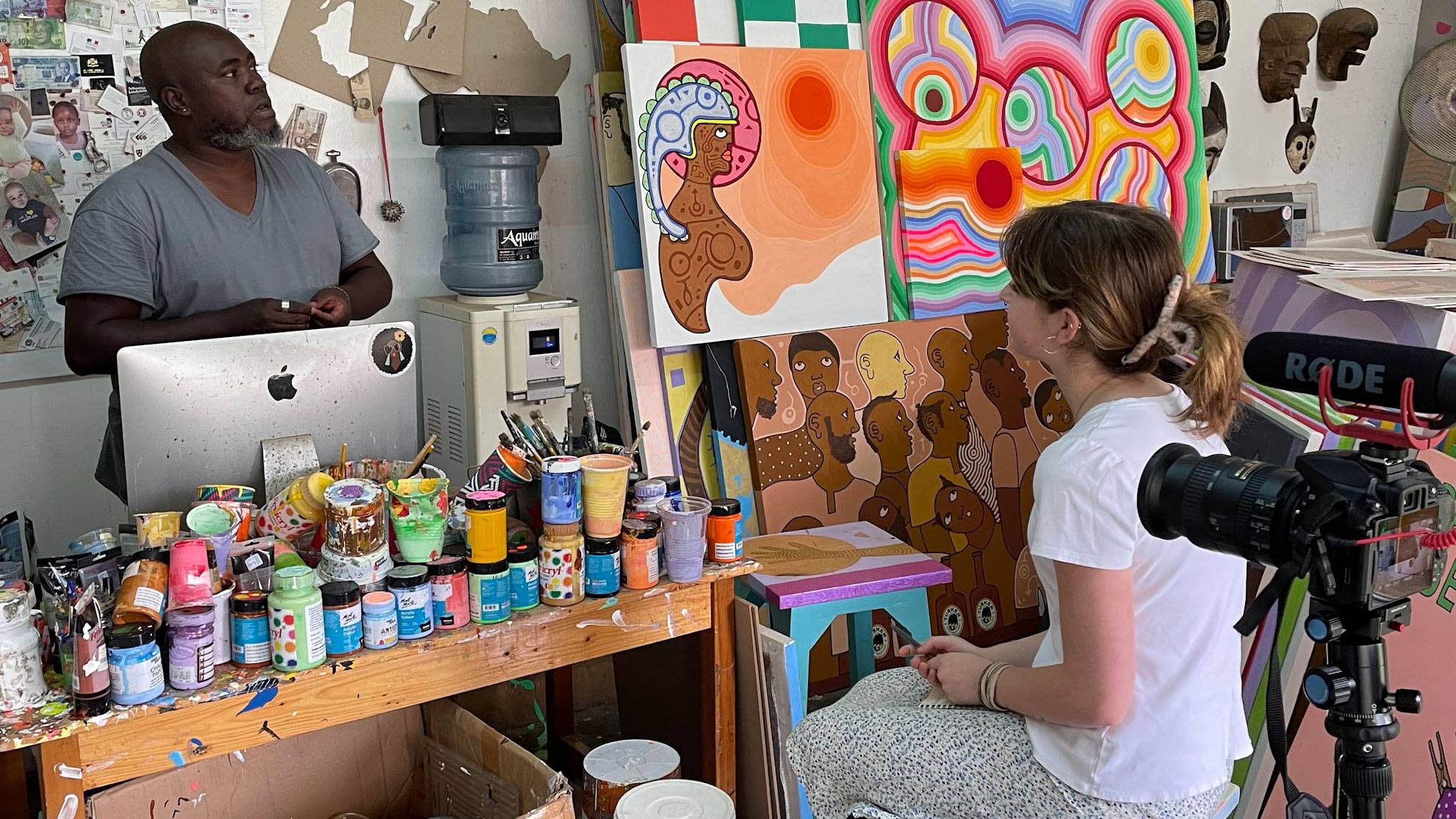In the fall of my first year at Colgate, I applied on a whim to the Benton Scholars program. Nine months later, I stood in the bustling metropolis of Nairobi, Kenya, on my way to interview one of East Africa’s most renowned contemporary artists.
I came to Colgate not knowing what I wanted to study. But I had ferocious curiosity and an ever-increasing desire to learn about untold stories. I began to ponder these questions: Who creates the dominant narrative? Who writes history? Why does it matter?
After I was accepted into the Benton Scholars program, I took the course Russia and Ukraine: Then and Now with Prof. Alice Nakhimovsky and discovered the power of art and literature as political weapons and levers for activists. Although these disciplines are being pushed to the side, I knew I wanted to investigate the power of art in the contemporary world.
Kenya has always fascinated me. In the ’90s, my mother worked in the small village of Bomet to improve water sanitation, and she told me stories of the wonderful people, nature, and culture she encountered there. I began to wonder who and what shaped my schema of African culture, history, and present-day politics. How and why was I being fed these narratives? Why was I taking the Western perspective as truth?
As I conducted primary research, I grew more fascinated with Chinese infrastructure projects in Africa and how Kenyans are responding to these changes. So, with the support of the program, I decided to interview artists who approached social, political, and environmental issues occurring in East Africa today.
I was particularly struck by Michael Soi. A contemporary artist whose work features comic-like figures and depictions of Kenyan pop culture, Soi uses his art to draw attention to taboo topics such as the commercial sex trade and government money laundering. His collection “China Loves Africa” masterfully reveals China’s attempt to exploit Africa’s resources and cheap labor. Unlike Western museums — which often portray Africa as a passive, traditional continent — Soi asserts African agency and its power to recognize the signs of foreign exploitation.
I also met with the wonderful Peterson Kamwathi, whose work has been shown at venues around the world. While Kamwathi’s studio is located next to Soi’s, his work takes on a different essence. In my interview with Kamwathi, he said that “systems that yield power have co-opted the pictorial device… In elections [in Kenya], you have products going off the billboards and politicians going up.”
Kamwathi claims that, in recent years, his art has shifted to a sociological reflection rather than a political assertion. “If I claim that my art is political, then it can become a form of dogma,” he said.
Kamwathi’s focus on how his art is received within a corrupt framework greatly shapes the messages he relays. His work makes me question the dangers of asserting objectivity in art. How can artists relay a strong political message that brings about positive change in a flawed system?
In the first few months of my sophomore year, I have continued to expand the scope and depth of my project. Through classes such as Global Contemporary Art with Prof. Brynn Hatton and Capitalism and Global Justice with Prof. Aatif Abbas, I am continuously expanding my knowledge of the intersection of art and politics. The Benton Scholars program pushes me again and again to consider the deeper historical implications behind dominating structures and institutions. My research will culminate in various presentations, asking the wider Colgate community the same questions.
